The Ultimate Guide to Carbon Accounting Software: Everything You Need to Know

Our planet is gasping. Every year, the world inches closer to environmental tipping points that we can no longer afford to ignore. In this era of heightened climate awareness, company leaders can’t continue with business as usual and need to step up and take responsibility for their carbon footprints. Measuring, managing, and mitigating those emissions is no small task unless you use carbon accounting software.
Its adoption grows each year because, first, it helps companies reach their sustainability goals, and second, more businesses either realize the importance of emissions calculations or are forced to comply with environmental regulations. The numbers prove it: what was a $15.6 billion market in 2023 is set to explode and reach an impressive $82.6 billion by 2032. So, why is a carbon accounting solution a major tool in a company’s arsenal for building a low-carbon future? If you want to know more about this software and how it can drive meaningful change for your business, check this guide.
What is Carbon Accounting?
As straightforward as it sounds, carbon accounting is the process of quantifying and tracking an organization’s greenhouse gas (GHG) and carbon dioxide emissions. It’s essentially a way to quantify the climate impact of a business, government, or individual activities. Similar to financial accounting, which tracks every penny, emission accounting calculates an entity’s environmental footprint by totaling all sources of GHG emissions.
Why is carbon dioxide footprint measurement important? Because without accurate data management on emissions, efforts to reduce them are nothing more than a shot in the dark. Carbon accounting solutions give organizations a clear picture of their GHG emission magnitude, which helps set more realistic emission reduction targets and develop effective strategies to achieve them. More than corporate responsibility, it’s increasingly vital in a world where consumers, investors, and regulators demand greater environmental accountability.
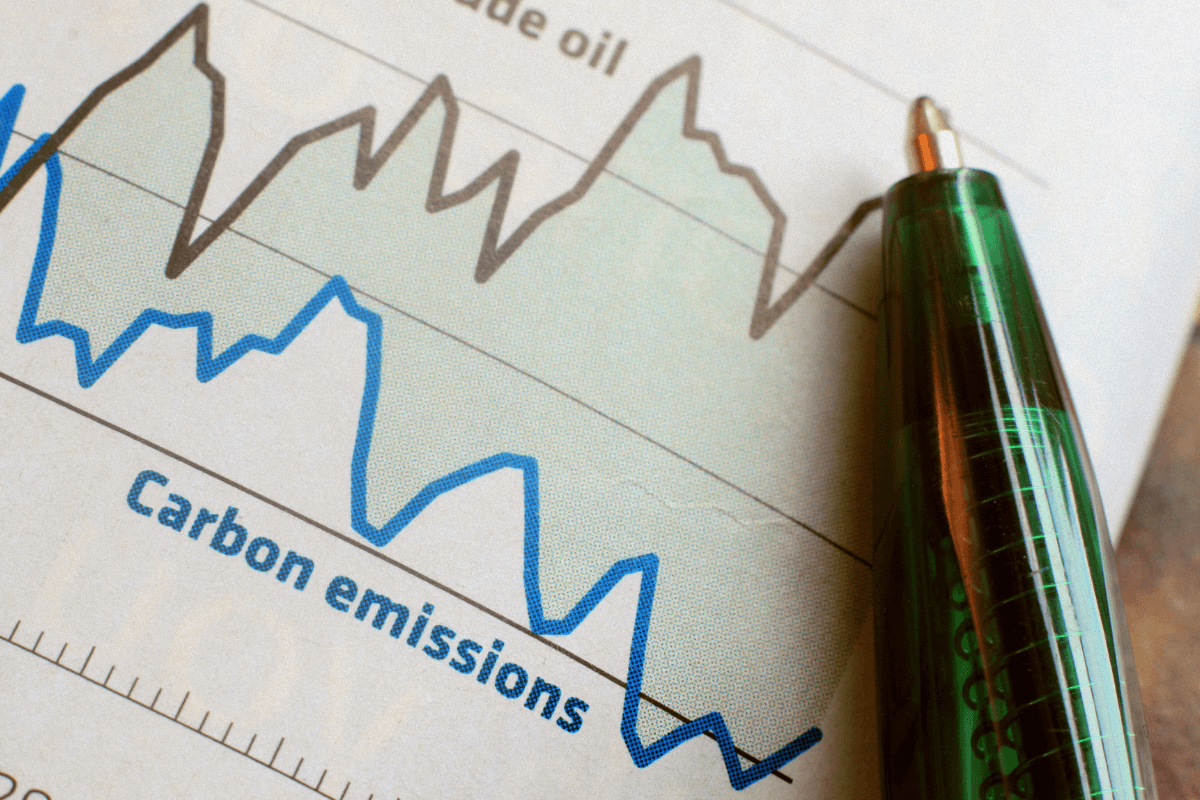
Carbon management is not only good for the planet but also makes good business sense. Companies that understand and manage their carbon footprints can save costs by optimizing energy use, reducing waste, and future-proofing their business.
The carbon accounting method rests on a few key principles that ensure CO2 emissions are measured, tracked, and reported properly by a company:
- Completeness. All relevant emissions must be accounted for, whether they occur directly from your operations or indirectly through your supply chain (from the fuel your fleet uses to the electricity that powers your offices).
- Consistency. To track progress over time, carbon accounting must be done consistently, using the same methods and data sources.
- Transparency. Clear reporting is crucial. Stakeholders—from employees to shareholders to customers—need to trust that your carbon data is accurate and that your reduction efforts are genuine.
- Accuracy. While it’s impossible to measure emissions with 100% accuracy, the goal is to be as accurate as possible and use the best available methodologies.
- Relevance. Focus on the most significant sources of emissions. Not every tiny detail needs to be tracked, but the biggest contributors certainly do.
Here are what good practices an effective GHG accounting typically involves:
- Data collection on energy use, transportation, waste production, and more.
- Emission factor application. Converting activity data (like kilowatt-hours of electricity used) into CO2 equivalents using standardized emission factors.
- Reporting about your carbon footprint and the steps you’ve taken to reduce it.
The Role of Carbon Accounting in Business
As the urgency for environmentally-friendly business practices grows, so does the importance of measuring and reducing CO2 emissions. That’s the basis for a sustainable future for your business and the planet. Plus, the benefits of carbon accounting are beyond question. And we don’t just mean “green” benefits for society and the environment but tangible financial and operational gains as well:
- Enhanced decision-making. Companies can pinpoint carbon-intensive areas and optimize those operations to reduce costs.
- Risk management. A precise picture of carbon exposure helps business leaders assess potential financial risks associated with climate change and develop strategies to mitigate them.
- Innovation and efficiency. Carbon accounting software can show opportunities for process improvements, energy efficiency, and the adoption of low-carbon technologies.
- Cost savings. Lowering energy consumption and waste through carbon reduction initiatives can save you money.
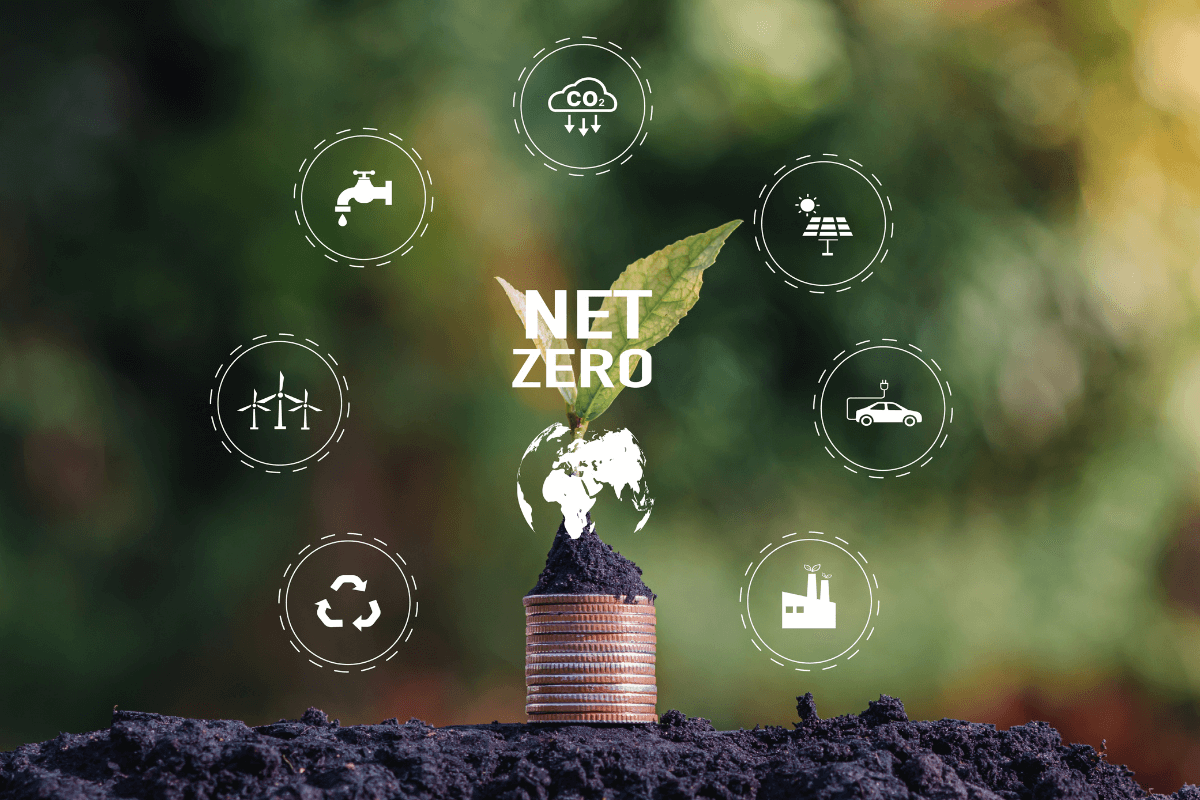
Regulatory compliance
As global climate regulations tighten, GHG accounting becomes more and more crucial for businesses to avoid penalties and maintain operational continuity. Accurate emission measurement and reporting, guided by the GHG protocol or similar, is the first step to compliance with environmental industry standards and a sure way to avoid reputational damage.
Corporate social responsibility
Consumers and investors alike demand more from the companies they support, and sustainability is at the top of their list. The carbon accounting platform helps businesses transparently communicate their emissions reduction efforts and improve their corporate social responsibility (CSR) practices. For example, a carbon accounting solution can show you what else you can do to reduce your carbon footprint. Generally, companies with strong CSR programs often benefit from more loyal customers, elevated employee morale, and a stronger brand identity.
Financial implications
Initial investments in carbon accounting may seem high, but the long-term rewards justify them. You can decrease energy usage and minimize waste, which are already weighty savings. What’s more, eco-conscious consumers are ready to overpay for products built with environmental responsibility in mind. So, if you can prove your green credentials, you’re in a good position to capture this market. Investors also value companies with strong sustainability profiles because they are a more secure long-term investment.
Key Features of Carbon Accounting Software
Carbon accounting solutions differ, so you should know what functionalities good software must have to choose the best one for your business. But first, let’s clarify what is carbon accounting software. It’s a special tool that simplifies tracking, measurement, and management of a company’s greenhouse gas emissions. Now, let’s review the key features of this tool in detail.
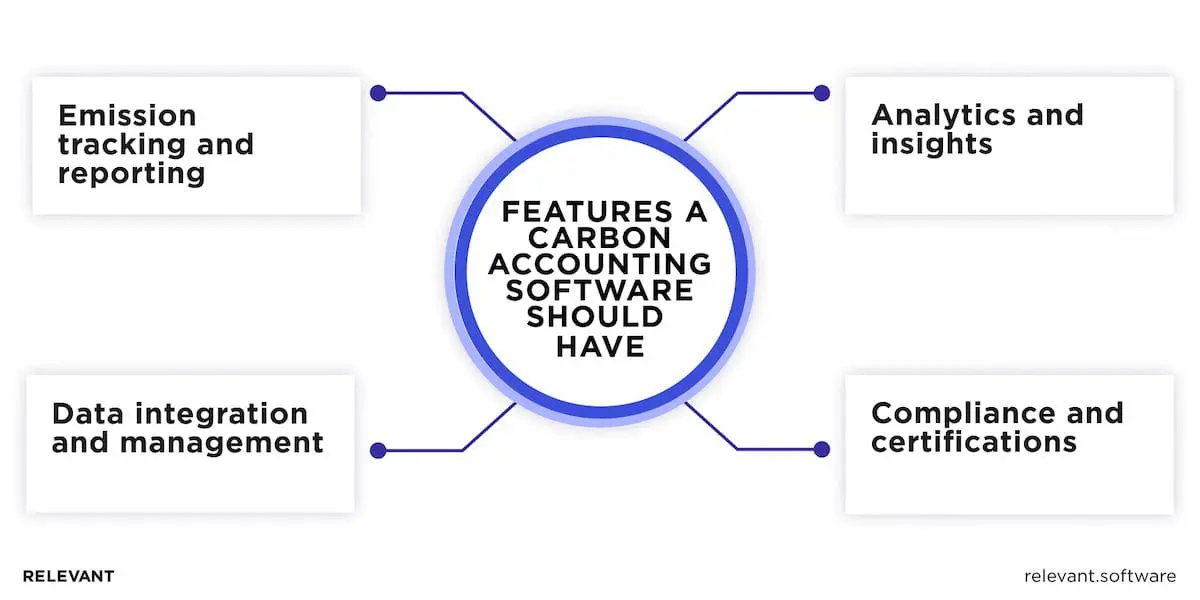
Emission Tracking and Reporting
The ability to track and report emissions across various aspects of your business is actually the main reason companies adopt the software. So, how exactly does it help with emission measurement? It allows you to:
- Categorize and track all types of emissions
There are three types of emissions:
- Scope 1 encompasses direct emissions from sources a company owns or controls,
- Scope 2 covers indirect emissions from purchased steam, electricity, cooling, or heating, etc.,
- Scope 3 accounts for the broader emissions linked to business activities within a company’s value chain.
The carbon accounting software lets you understand where your company’s carbon footprint is coming from, which helps you target the major areas for CO2 reduction.
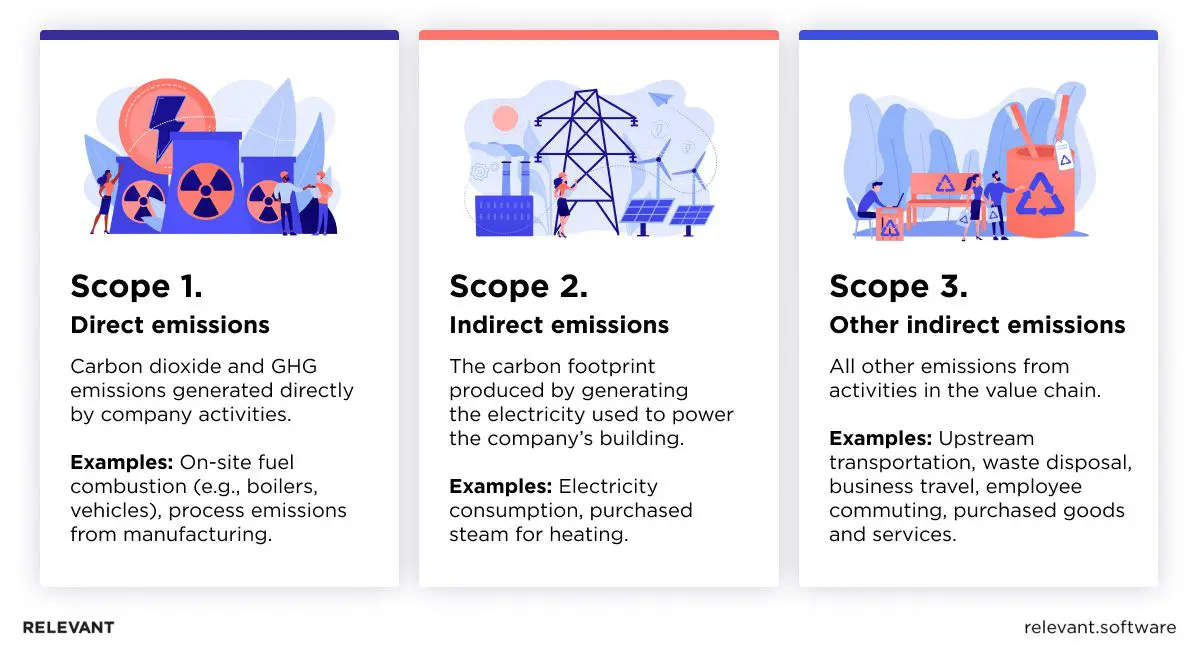
- Automatically collect data
Carbon footprint calculators gather data from a variety of sources (energy bills, transportation logs, waste management reports, etc.), which reduces human errors and ensures more accurate emissions data.
- Follow reporting standards and frameworks
The climate risk assessment platform supports the established standards and frameworks like the Greenhouse Gas (GHG) Protocol and the Carbon Disclosure Project (CDP). Such reports are more accurate and meet the expectations of regulators, investors, and other stakeholders.
Data Integration and Management
A good automated carbon accounting software should seamlessly integrate with an organization’s existing business systems, it may be Enterprise Resource Planning (ERP) or Customer Relationship Management (CRM) platforms. When all your systems communicate with each other, data collection and exchange becomes smooth, which reduces manual effort and enhances data consistency. For example, you can easily pull in data about energy consumption from your ERP system or sync with your CRM to track business travel without doubling your work.
The software must also be capable of handling diverse data sources (energy consumption, travel data, waste generation, and supply chain information). Data centralization from different departments and operations lets organizations gain a complete view of their carbon footprint. But, when the software deals with many data sources, it needs validation and verification processes to maintain information accuracy and reliability. Checks for inconsistencies, errors, and outliers, as well as mechanisms for data cleansing and normalization, are a must for data quality.
Analytics and Insights
Carbon accounting software should have state-of-the-art analytics features to produce meaningful, actionable insights from the data you collect. Otherwise, there is no reason to gather emission information. So, what analytics features should an emission measurement tool have?
- Carbon footprint analysis. The software should generate detailed reports on an organization’s carbon emissions management, broken down by emission source, location, and time period.
- Scenario modeling and forecasting. Organizations can use the software to model the environmental impact of cloud computing and different emission reduction strategies and evaluate their potential financial and environmental benefits.
- Benchmarking and performance tracking. Emissions data analysis and comparison to industry benchmarks allow organizations to identify areas that can be improved and track progress toward carbon reduction and sustainability goals.
Compliance and Certification
Climate risk analytics tools should support organizations in meeting regulatory requirements and achieving sustainability certifications. Therefore, look for carbon accounting solutions that have such features:
- Compliance with environmental regulations. Your organization needs to stay updated on relevant regulations and generate reports in the required formats.
- Facilitate certifications. The software should support the data collection and reporting requirements for sustainability certifications such as ISO 14064 and PAS 2060.
- Audit readiness. Good solution offers audit trails, data traceability, and other features that simplify the audit process and minimize disruptions.
Business Benefits of Using Carbon Accounting Software
Business sustainability and eco-friendliness are essential, but there is more to gain. Let’s review the business benefits of carbon accounting.
- Automatic data collection and analysis. It saves you time while ensuring there are no inconsistencies or gaps in GHG information.
- Less manual errors. Manual data entry, more often than not, introduces errors, which, in CO2 accounting, can mean the difference between accurate reporting and a compliance nightmare.
- Cost-saving opportunities. Speaking of efficiency, one of the most tangible benefits of a carbon accounting solution is its ability to help you reduce waste and resource consumption. By pinpointing high-emission areas, you can optimize operations, decrease excessive energy use, and lower costs.
- Reduced waste and resource consumption. More efficient resource management driven by data insights will drive your business growth.
- Data-driven insights for strategic planning. Emissions trends and patterns identified by the software can help businesses identify areas that contribute most to reducing emissions. For example, an organization might find out that a large portion of its carbon footprint comes from its logistics operations. Using this information, the business can optimize routes or switch to more fuel-efficient vehicles to reduce emissions along with costs.
- Sustainability initiatives. Whether you aim for carbon neutrality, zero waste, or something else, the emissions measurement software helps you track your progress and make the necessary adjustments along the way.
- Transparent reporting for investors and stakeholders. Environmentally conscious investors and stakeholders would like to know how you manage your company’s environmental performance. The carbon management platform makes it easy to give them that information and show that your company is serious about its environmental responsibilities.
- Improved brand reputation. A positive environmental track record can set you apart from the competition. When customers see that you’re committed to sustainability, they’re more likely to trust and support your brand and pay more for eco-friendly products and services.
How to Choose the Right Carbon Accounting Software
It’s really important to select the right emissions-tracking tool because it will influence your ability to measure and manage your carbon footprint, drive meaningful sustainability initiatives, and achieve compliance with environmental regulations. We prepared a quick guide on how to pick the tool, as well as an overview of the best carbon accounting software.
Requirement Analysis
The first step is to clearly define your organization’s specific requirements. What do you want to achieve by implementing GHG tracking software? Is it regulatory compliance, emissions reduction, or stakeholder reporting? The answers to these questions will define the requirements for the enterprise software you need. The scale of operations and complexity of emissions data you need to manage will further influence your choice in favor of a simple, user-friendly solution or a more robust platform capable of handling complex datasets.
Key Considerations
When you’re clear about your needs, it’s time to think about the practicalities. User-friendliness is a big one. Even the most powerful sustainability software won’t do much good if it’s too complicated to use. You need a solution that’s intuitive so your team can start using it as soon as you implement it without training.
The ability to customize and scale the software is also important, as it should accommodate your needs. Finally, customer support in case of technical issues and the availability of training resources will help you maximize the value of your investment.
Popular Carbon Accounting Software Solutions
You will find numerous top carbon accounting software for different tastes and needs in the rapidly expanding market. Here’s a brief overview of some leading players:
Net Zero Cloud by Salesforce
Salesforce, primarily known for its CRM solutions, offers an end-to-end tool for managing carbon footprints. You can access advanced scenario modeling and goal-setting tools specifically designed to help organizations achieve their net-zero targets. Meanwhile, its user-friendly interface and strong reporting capabilities make it easy for teams to track progress and communicate their sustainability efforts across the organization.
IBM Environmental Intelligence Suite
IBM’s environmental intelligence is a broad AI-powered solution for environmental management, which includes carbon accounting as well. Their suit combines AI analytics with real-time data to help businesses predict and mitigate risks associated with climate change in addition to CO2 measurement. It’s a top choice for large enterprises with complex environmental data needs.
Sphera
Sphera is one of the best carbon accounting software in the market, which targets large enterprises with complex operations. Companies can access a wide range of features: emissions tracking, compliance management, risk assessment, and more.
Workiva
Known for its financial reporting capabilities, Workiva also offers carbon accounting modules. It’s beneficial because companies can streamline their financial and sustainability reporting processes align, and easily manage both within a single platform.
SAP
Many know SAP as a popular ERP solution provider, but it also incorporates sustainability features into its software suite. It lets companies track and manage their GHG emissions and comply with environmental regulations.
To give you a clearer picture, here’s a quick carbon accounting software comparison of these popular solutions.
| Software | Key Features | Best For | Pricing |
| Net Zero Cloud by Salesforce | CRM integration, emissions tracking, scenario modeling, sustainability goal setting | Companies committed to net-zero goals | Custom pricing based on needs |
| Environmental Intelligence Suite by IBM | AI-driven analytics, real-time data, risk mitigation, advanced integration | Large enterprises with complex data needs | High-tier, custom pricing |
| Sphera | Detailed emissions tracking, compliance management, risk mitigation, scalability | Large enterprises requiring customization | Premium pricing for large enterprises |
| Workiva | Financial reporting integration, ESG disclosure | Companies that need financial and sustainability reporting in one tool | Subscription-based |
| SAP | ERP integration, sustainability management | Large enterprises with existing SAP systems | Part of the ERP suite |
Implementation Process Step by Step
Implementing carbon accounting software is a significant step towards sustainability and more efficient operations, but it can feel a bit overwhelming. Don’t worry—we’ve got you covered. Let’s walk through the major stages so you can see how it all comes together.
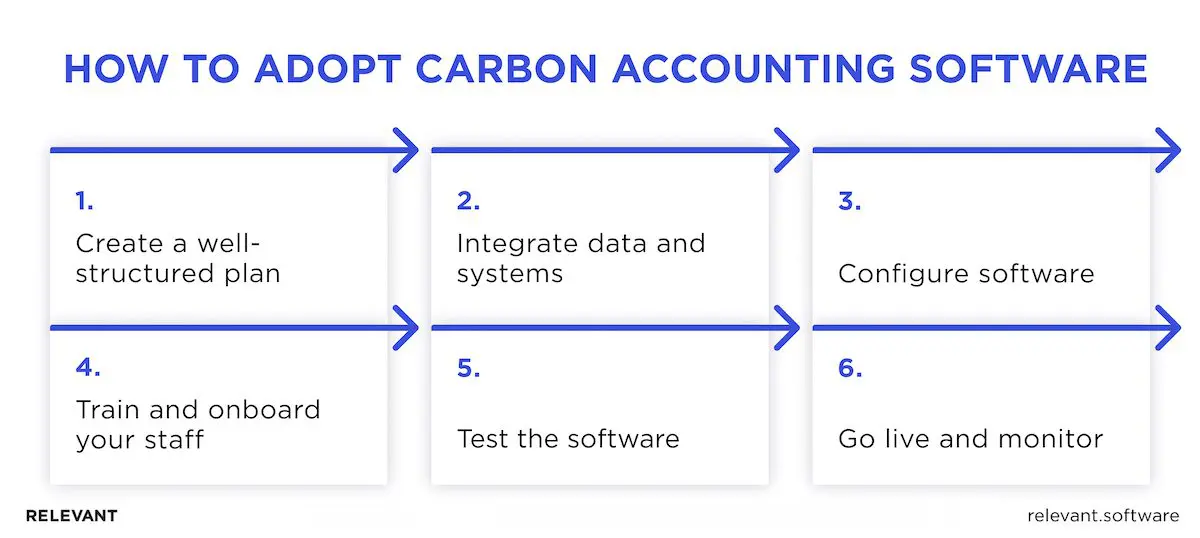
Step 1: Planning
Successful implementation begins with a well-structured plan. Start by mapping out what needs to happen and when. Create a timeline that outlines each phase of the implementation, from the initial setup to full integration. Be realistic—good things take time, and rushing through this step can lead to headaches down the road.
Next, you should allocate resources and assign responsibilities. Who’s going to do what? Identify the members of your team who will be responsible for certain aspects of the implementation. Maybe you need custom software development services to handle technical integration while your sustainability officer oversees data collection. Make sure everyone knows their role and has the resources they need to succeed.
Step 2: Data Collection and Integration
With a solid plan, you should take care of the data. After all, your emission tracking software is only as good as the data it’s fed on.
So, what you need is to identify where your emissions data is coming from—energy bills, travel logs, supply chain records, and so on and make a list of all the relevant data sources. Remember, the more comprehensive your data, the more accurate your carbon footprint analysis will be.
But when carbon accounting software processes information from multiple sources, it’s critical to make sure it’s accurate and complete. Check it for any gaps or inconsistencies as well as the data relevance. Any errors in data here will ripple through the entire system. That’s why take the time to validate and verify your data, so you’re starting on the right foot.
The final touch for this phase is software integration with your current systems in use—whether that’s your ERP, CRM, or any other third-party solutions. Seamless integration translates to automatic data exchange between all your systems, which reduces manual input and data duplication.
Step 3: Software Configuration
Alright, you’ve gathered your data and integrated it with your systems—now it’s time to make the carbon accounting software truly yours. This means you should customize it to fit your unique organizational needs. Start with the features to align with the goals you set at the beginning. For example, if your goal is to reduce energy consumption, configure dashboards to highlight energy usage metrics and set up alerts for when consumption exceeds targets. That’s the time to mold the software into a platform that feels like a perfect fit for your organization.
Set up user roles and permissions to ensure that each team member has access to the tools they need without being overwhelmed by unnecessary features. By doing so, you’ll facilitate the user experience and strengthen security because only those with permissions you define can access sensitive data.
Dashboards are where you’ll monitor progress, track key metrics, and make data-driven decisions. Take the time to configure them so they highlight the information you need most. Similarly, set up reporting templates that will make it easy to generate consistent, accurate reports with just a few clicks.
Step 4: Training and Onboarding
With your carbon accounting software customized and ready to go, it’s time to bring your team on board.
Organize training sessions for your employees that will cover everything from the basics to the advanced features of the software. Depending on your team’s needs, this could be a series of workshops, webinars, or one-on-one sessions. The purpose is to make everyone feel confident and comfortable using the software. And remember—no question is too small. Encourage your team to ask anything that might help them get the most out of the carbon accounting tool.
To help your team continue learning and adapting to the software, it would be helpful to provide continuous support and extra resources. This could include an internal knowledge base, regular Q&A sessions, or access to the vendor’s customer support.
Step 5: Testing and Quality Assurance
If you want the carbon accounting software to operate smoothly and flawlessly, don’t skip this critical step. Run the software through a series of tests that mimic real-world usage. Test every feature, integration, and customization to ensure everything works as expected. At this stage, you can catch any bugs or glitches that you need to fix before they affect your day-to-day operations. Work with your IT team or the custom software development vendor to fix bugs, adjust configurations, and make any necessary changes.
Step 6: Go Live and Monitoring
Now, your carbon accounting software is ready to go live. Roll out the software across your organization and make it available to all relevant users. That’s the moment when all your hard work in planning, customization, and training pays off. Make sure everyone knows the software is live and ready to use, and provide any last-minute instructions or tips to help with the transition.
Yet, it’s too early to relax even after a successful software launch. You should keep a close eye on how it’s being used and how it performs. Check whether there are any unexpected issues and analyze whether the software meets your expectations. Monitoring usage and performance helps you catch any problems after launch early and make corresponding adjustments.
After the initial rollout, we’ll also advise you to gather feedback from your team on what works well and what could be improved. After all, they are the end users who will use the solution for work, so listen to their feedback and make any necessary tweaks.
Our Green Case Studies
Relevant experts have also advanced ecological progress through the development of sustainable and environmentally friendly products. Here are a couple of our clients’ successful “green” stories.
Empowering Battery Users for a Sustainable Future
One of our exciting ventures in the Greentech space was our collaboration with a company that aims to advance sustainable energy solutions. They needed a robust and user-friendly customer portal for their battery users and internal team—a platform that could seamlessly track battery usage and generate comprehensive reports.
Relevant provided outstaff services to help bring this project to life. The team of experts we assembled, based on the client’s needs, effortlessly fit into their development pipeline and started to deliver value from day one. They worked tightly with the client’s team to design and build a portal that helps users monitor battery performance and create reports on their usage. The solution we built helped thousands of environmentally conscious users optimize their energy consumption and reduce their carbon footprint.
Tracking Carbon Footprints with a Competitive Twist
TripShift is another Greentech project we worked on that aims to combat climate change. The company wanted to build a mobile app that automatically detects the mode of transport a user takes—be it a bike, bus, or car—and calculates the associated CO2 emissions.
We needed to start with the Discovery phase and thoroughly define the project’s goals, scope, and requirements. Our team conducted an in-depth analysis of the target audience and defined the app’s core functionalities to map out a development strategy. With everything set, our iOS developers began to build an intuitive mobile app that emphasizes ease of use and turns carbon tracking into a user-friendly experience.
The specialty of this app is a fun and gamified approach to CO2 tracking and reduction. Users can invite friends and participate in competitions to see who can travel the most sustainably.
Build Carbon Accounting Software with Relevant Software
Regardless of the industry you operate in, monitoring and mitigating your company’s carbon footprint is no longer optional. It’s a strategic imperative that requires the right tools and expert guidance. If this article about carbon accounting software has inspired you to think about your company’s own climate impact, Relevant Software can help.
We have some expertise and experience in developing products that help businesses track, manage, and reduce their environmental impact. Whether you need help with the entire product development process or just need extra hands at key stages, our team has the skills and knowledge to create a solution that perfectly aligns with your sustainability goals. Contact us to drive real changes tomorrow.



